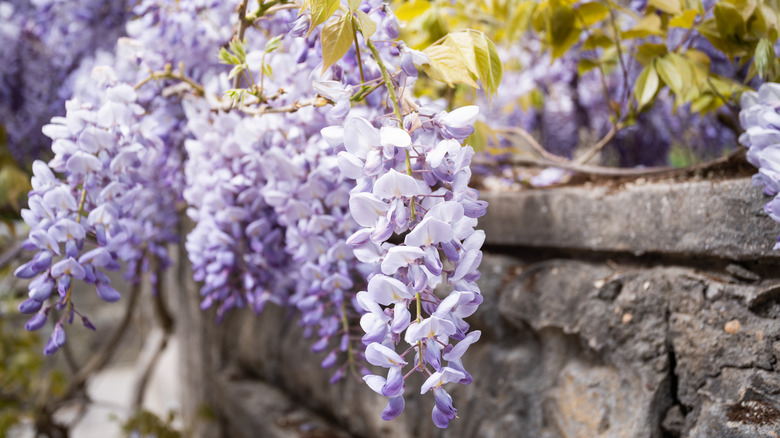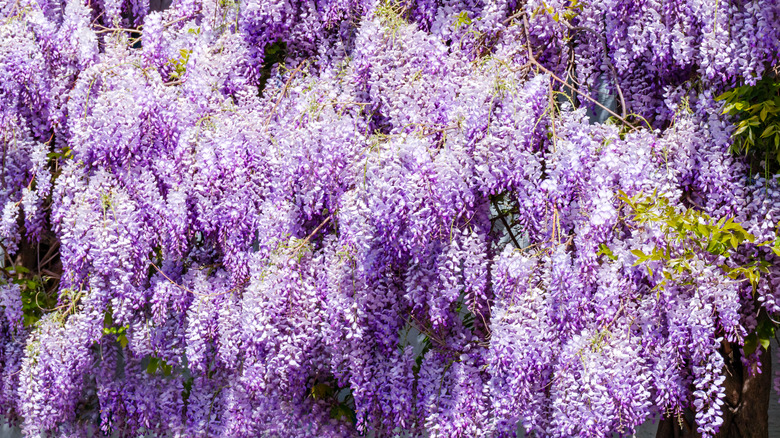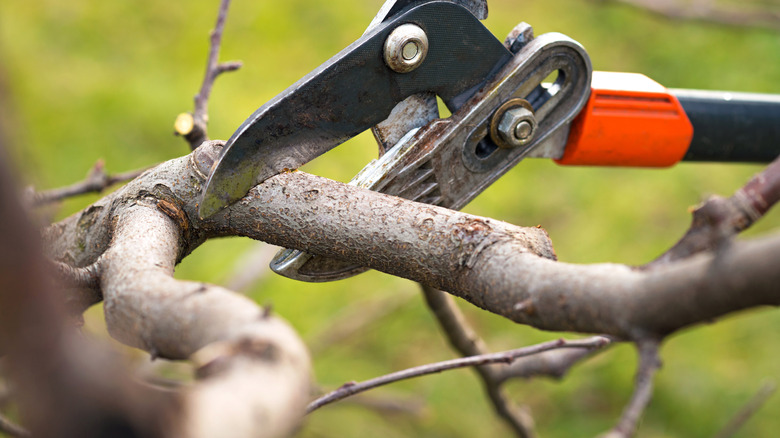How And When To Prune Wisteria
If you are looking to tame an unruly wisteria, or looking to maximize the growth of a newer one, it's important to know how and when to prune it. Doing this correctly will increase its beauty, improve its vertical or horizontal stability, and allow it to thrive. While your needs may vary slightly depending on what you want your wisteria to do and how you want it to grow, experts suggest pruning your plant twice a year – once in the summer and again in the winter — each time focusing on different stages of the plant's yearly cycle to get the best results.
Wisteria can be a fragrant and beautiful addition to any yard or garden. It can be used as an overhanging element on pergolas and arches, or as a climbing plant on exteriors or fences. It can also be trained to grow like a tree with beautiful draping blooms. Pruning should focus on removing any dead wood or diseased branches and controlling the size since these plants can grow to be quite large, often overtaking a large amount of space in only a single growing season.
Summer
Pruning wisteria twice per year takes advantage of seasonal differences in accessibility to all parts of the plant. Ideally, the first pruning session should occur mid to late summer (July or August) after flowering is complete. It's important to wait until the flowering has ceased to avoid taking off any new buds before they have a chance to blossom. Summer will give you a full perspective on how the plant looks fully bloomed.
The best approach each summer is to examine the plant from all angles and remove any shoots that are impacting the shape with handheld trimmers, including stragglers, undesired climbers, and dead branches. The best approach is to count 4-5 buds up the branch and cut it there. You can also uncross branches and eliminate any tangling or overcrowding, which will allow light and air to parts of the plant that may badly be in need of it. At the base of the plant, remove any suckers or unwanted pieces close to the ground, as well as any part of the plant that may be in danger of invading gutters, trees, or roof tiles.
Winter
Winter pruning for wisteria can be more vigorous since you will now be able to see the entire underlying branch structure and access all parts of the plant. Since wisteria can grow quite fast in good conditions, you may find that much of what you cut in summer has grown again. Cutting branches back by 3-4 buds all over in January or February can help allow the plant to thrive in the spring.
A bare plant also allows you to get closer in with a saw or trimmers, allowing you to reshape the plant as desired and replace or add external supports, like posts and wires, to encourage growth upward or horizontally. Untangle any inner parts that may be wrapped around each other, giving each branch plenty of space. When your wisteria has reached the desired size, experts recommend that you trim back one-third of the yearly growth to encourage the plant's overall health and beauty. Winter is also a chance to hard prune, cutting it back significantly. Cut back fully, wisteria usually will take 2-3 years to return to its former size and lushness.


